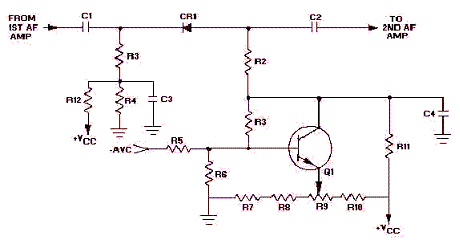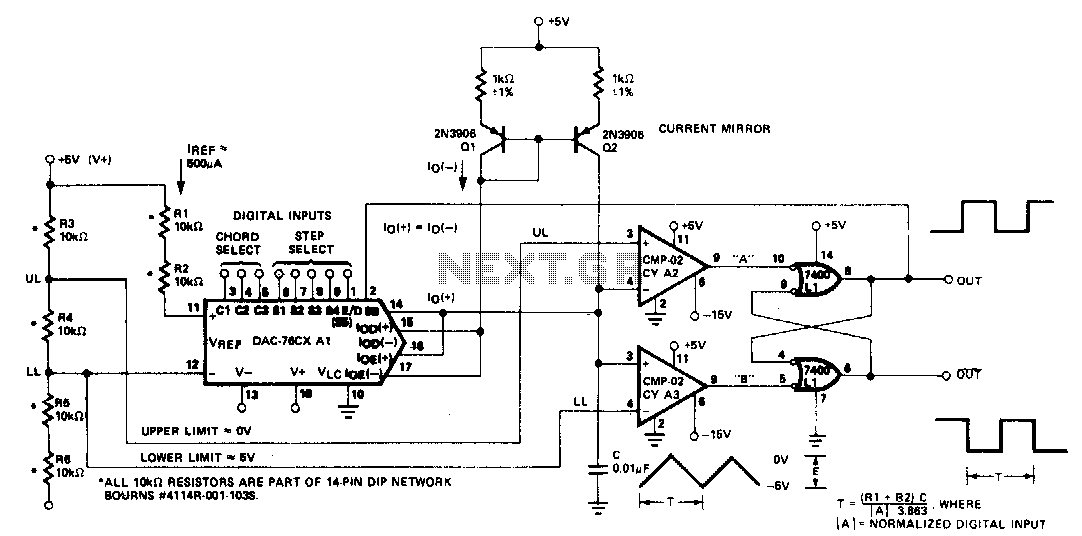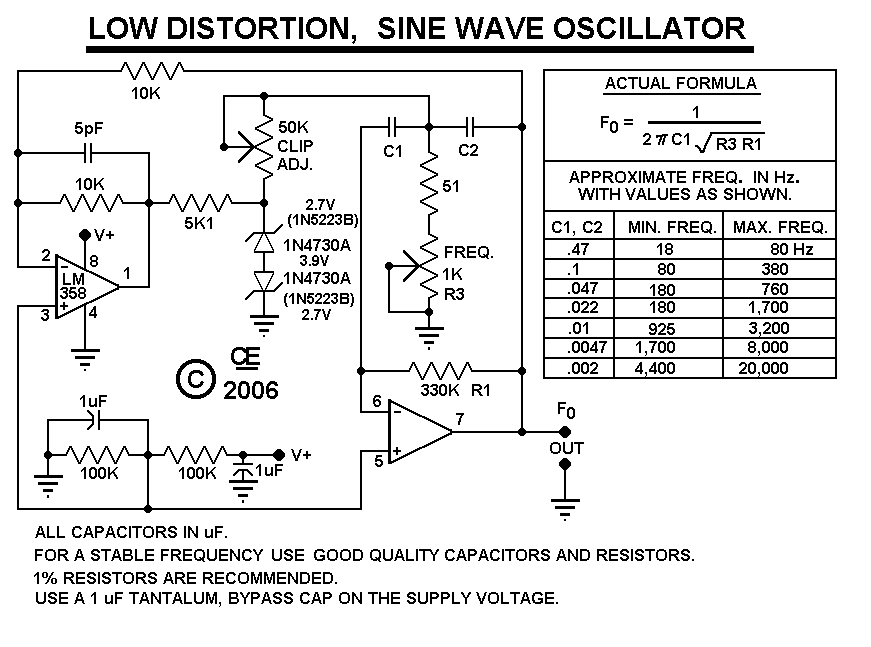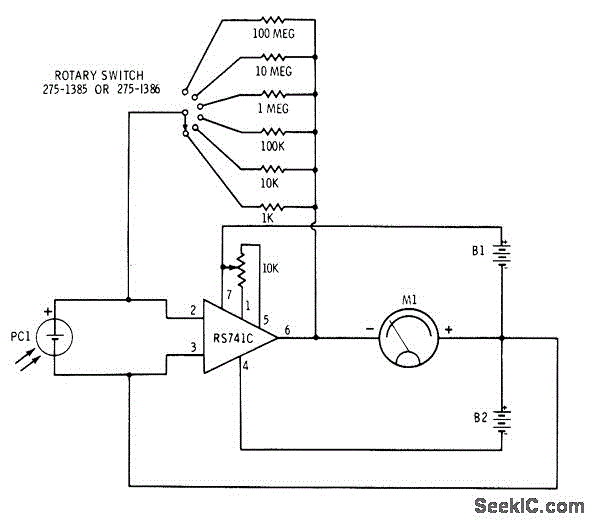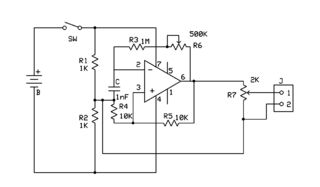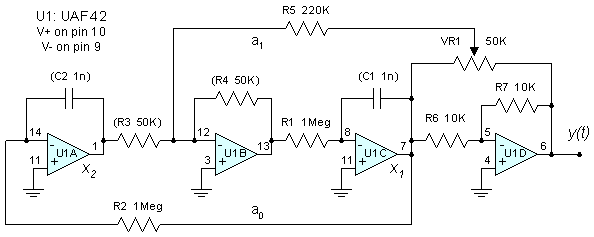
Wide range oscillator
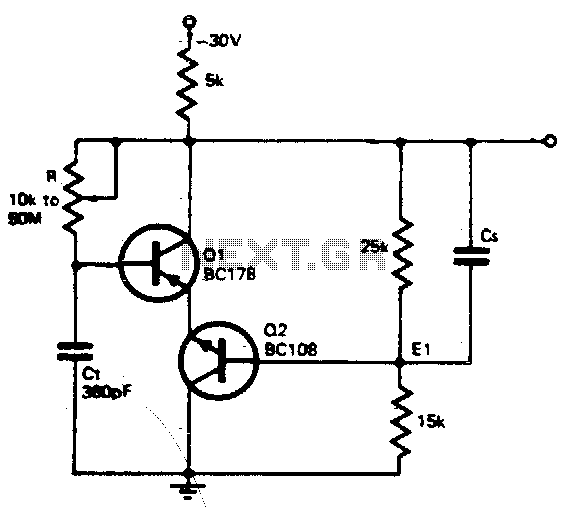
The timing resistor R can be adjusted to any value between 10 kΩ and 50 MΩ to achieve a frequency range from 400 kHz to 100 Hz. Connecting the timing resistor to the collector of Q1 ensures that Q1 receives its base current solely from the timing capacitor Ct. The timing capacitor recharges when the transistors are off, to a voltage equal to the base-emitter voltage of Q2 plus the base-emitter drops of Q1 and Q2. The transistors then begin conduction. Capacitor Cs is utilized to accelerate the transition, with a suitable value around 100 pF.
The circuit described utilizes a timing resistor R, which plays a crucial role in determining the oscillation frequency of the circuit. The adjustable range from 10 kΩ to 50 MΩ allows for fine-tuning of the timing characteristics, enabling the circuit to function effectively across a wide frequency spectrum from 400 kHz down to 100 Hz.
In this configuration, the timing resistor is connected to the collector of transistor Q1. This connection is vital as it ensures that Q1's base current is sourced exclusively from the timing capacitor Ct. The timing capacitor is responsible for charging and discharging, which in turn influences the switching behavior of the transistors in the circuit. When the transistors are in the off state, the timing capacitor charges to a voltage level that is determined by the combined base-emitter voltages of both transistors Q1 and Q2. This relationship is critical for maintaining the desired timing intervals and ensuring reliable operation of the circuit.
As the timing capacitor Ct reaches its designated voltage, it triggers the conduction of the transistors. The inclusion of capacitor Cs serves to enhance the speed of this transition, which is essential for achieving rapid switching and maintaining the integrity of the oscillation. A value of approximately 100 pF for capacitor Cs is recommended, as it provides an optimal balance between speed and stability in the timing characteristics of the circuit.
Overall, this configuration demonstrates a well-thought-out design that effectively utilizes the characteristics of resistors and capacitors to control timing and switching within the circuit, ensuring precise frequency modulation and reliable performance.Timing resistor R may be adjusted to any value between 10 K and 50 M to obtain a frequency range from 400 kHz to 100 Hz. Returning the timing resistor to the collector of Q1 ensures that Q1 draws its base current only from the timing capacitor Ct.
The timing capacitor recharges when the transistors are off, to a voltage equal to the base emitter voltage of Q2 plus the base emitter drops of Q1 and Q2 The transistors then start into conduction. Capacitor Cs is used to speed up the transition. A suitable value would be in the region of 100 pF.
The circuit described utilizes a timing resistor R, which plays a crucial role in determining the oscillation frequency of the circuit. The adjustable range from 10 kΩ to 50 MΩ allows for fine-tuning of the timing characteristics, enabling the circuit to function effectively across a wide frequency spectrum from 400 kHz down to 100 Hz.
In this configuration, the timing resistor is connected to the collector of transistor Q1. This connection is vital as it ensures that Q1's base current is sourced exclusively from the timing capacitor Ct. The timing capacitor is responsible for charging and discharging, which in turn influences the switching behavior of the transistors in the circuit. When the transistors are in the off state, the timing capacitor charges to a voltage level that is determined by the combined base-emitter voltages of both transistors Q1 and Q2. This relationship is critical for maintaining the desired timing intervals and ensuring reliable operation of the circuit.
As the timing capacitor Ct reaches its designated voltage, it triggers the conduction of the transistors. The inclusion of capacitor Cs serves to enhance the speed of this transition, which is essential for achieving rapid switching and maintaining the integrity of the oscillation. A value of approximately 100 pF for capacitor Cs is recommended, as it provides an optimal balance between speed and stability in the timing characteristics of the circuit.
Overall, this configuration demonstrates a well-thought-out design that effectively utilizes the characteristics of resistors and capacitors to control timing and switching within the circuit, ensuring precise frequency modulation and reliable performance.Timing resistor R may be adjusted to any value between 10 K and 50 M to obtain a frequency range from 400 kHz to 100 Hz. Returning the timing resistor to the collector of Q1 ensures that Q1 draws its base current only from the timing capacitor Ct.
The timing capacitor recharges when the transistors are off, to a voltage equal to the base emitter voltage of Q2 plus the base emitter drops of Q1 and Q2 The transistors then start into conduction. Capacitor Cs is used to speed up the transition. A suitable value would be in the region of 100 pF.
